Pest Control
Effective Strategies for Eliminating Garden Pests: Your Friendly Greenhouse Guide
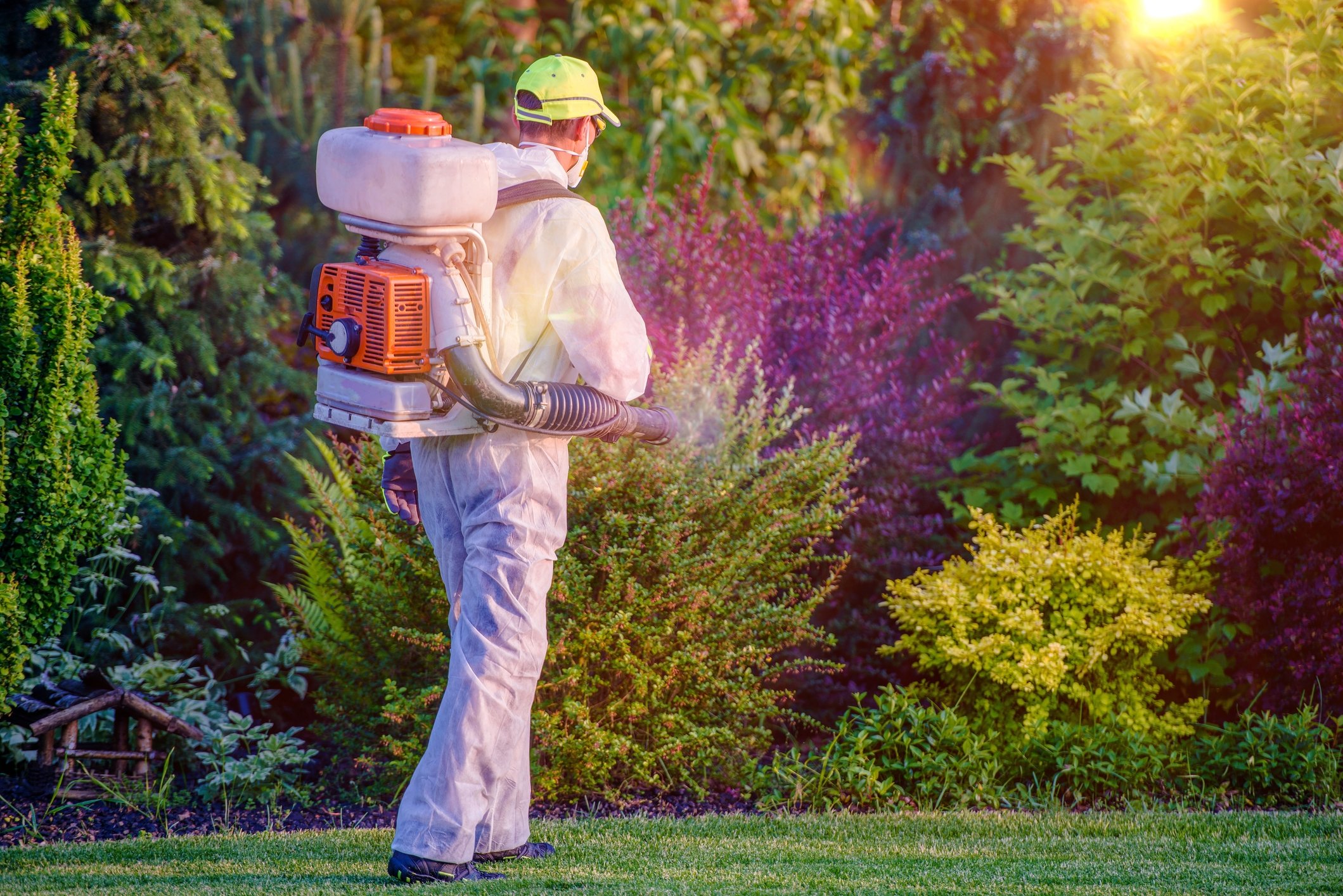
Are you struggling with garden pests wreaking havoc in your greenhouse? Don’t worry; you’re not alone. In this comprehensive guide, we’ll share effective strategies for eliminating these pesky invaders and help you maintain a healthy, thriving greenhouse.
Greenhouse pests, such as aphids, spider mites, and whiteflies, can significantly affect the yield of your greenhouse crops if left unchecked. But fear not! With the proper preventative measures and control tactics, you can protect your plants and enjoy a bountiful harvest. Stay tuned as we delve into practical and environmentally friendly ways to keep these uninvited guests at bay.
Throughout this guide, we’ll provide useful tips and techniques for tackling common greenhouse pests, from using beneficial insects to employing good hygiene practices. So, buckle up and get ready to transform your greenhouse into a pest-free haven where your plants can grow and flourish without any unwanted distractions.
Understanding Greenhouse Pests
As you begin your journey in greenhouse gardening, one thing you’ll need to keep an eye out for is the presence of various pests that can cause significant damage to your precious plants. Here, we’ll help you quickly learn how to recognise common greenhouse pests and understand their behaviours, so you can deal with them more effectively.
Insects: The world of insects is vast, but their small size can sometimes make it difficult to identify them correctly. A few common greenhouse insects include aphids, ants, and scale insects. Keep an eye out for changes in leaf colour, honeydew deposits, and the presence of winged or wingless pests on the undersides of leaves.
Mites: Spider mites are among the most troublesome garden pests you might encounter. They are tiny and can often be found on the undersides of leaves, causing damage by feeding on plant tissue. Keep an eye out for webbing on foliage, yellow stippling, and leaf drop as signs of a mite infestation.
Fungus and mold: Mildew, fungi, and mold come in various forms, including powdery mildew and sooty mold. These conditions thrive in moist and poorly ventilated environments, so be sure to check your plants regularly for signs of these issues, such as discolouration and leaf distortion.
Garden pests: Beetle larvae, caterpillars, snails, and slugs are some examples of larger pests that might find their way into your greenhouse. They are usually attracted by certain plants and can cause extensive damage to foliage, roots, and fruits. Keep an eye out for holes in the leaves, chewed edges, and trails left by slugs and snails.
To keep these pests under control, here are a few strategies that you can employ:
- Regular inspection: Make a habit of frequently checking your plants for any signs of pest activity, paying close attention to the undersides of leaves and hidden areas where pests may be hiding.
- Promote beneficial insects: Encourage the presence of ladybugs, lacewings, and other beneficial insects in your greenhouse by providing hiding spots and pollen sources. This natural form of pest control can help keep harmful insects at bay.
- Physical barriers: Use netting and other barriers to exclude larger pests like birds and butterflies from your greenhouse, helping to protect vulnerable plants from damage.
- Maintain good hygiene: Regularly clean your greenhouse and remove dead foliage, weeds, and other debris that might harbour pests or diseases.
By keeping a watchful eye on your greenhouse and implementing these strategies, you can greatly reduce the risk of pest infestations and ensure a thriving, healthy garden for you to enjoy.
Prevention and Control of Greenhouse Pests
So, you’ve got a lovely greenhouse full of flowers and vegetables, but those pesky pests just won’t leave them alone. Fear not! Here are some preventative measures and control strategies to help you keep your greenhouse pest-free.
First things first, let’s focus on prevention. Maintaining a clean greenhouse environment is key to keeping pests at bay. Regularly remove any dead leaves or decaying plant matter, and sterilise pots and tools. Keep an eye on the temperature and humidity levels in your greenhouse, as pests tend to multiply in warm and humid conditions. Proper ventilation and monitoring of the climate will help combat this issue.
Remember, not all insects are bad for your garden! Attract beneficial insects like ladybirds, parasitic wasps, and hoverflies by planting flowers that they love in or around your greenhouse. In turn, these creatures will help control your pest population by munching away on aphids, caterpillars, and other undesirable bugs.
For pest control, try these strategies:
- Traps: Employ sticky traps or flypapers to catch things like whiteflies and fungus gnats. Hang them near plants susceptible to these pests for maximum effect.
- Water spray: Give your plants a good blast with a hose or a high-pressure water spray. This will dislodge pests like aphids (greenfly) and can be especially effective on tomatoes and peppers.
- Biological control: Introduce natural enemies of the pests, such as predatory mites, to your greenhouse. These helpful critters will consume the harmful pests without causing damage to your plants.
Integrated Pest Management (IPM) is a crucial strategy in achieving long-term pest control in your greenhouse. This includes monitoring and identifying pests, determining action thresholds, and combining a variety of approaches, such as:
- Cultural (e.g. pruning and irrigation)
- Mechanical (e.g. netting and traps)
- Biological (e.g. beneficial insects and parasites)
- Chemical (only when absolutely necessary and used responsibly)
By following these prevention and control strategies, you’ll be well on your way to enjoying a thriving, pest-free greenhouse. Happy gardening!
Frequently Asked Questions
How can I prevent pests from entering my greenhouse?
To prevent pests from entering your greenhouse, it’s essential to maintain its cleanliness. Regularly clean the surfaces, windows, and floors of your greenhouse to eliminate potential hiding spots for pests. Installing plant netting and net screens can also create barriers to stop pests from entering your greenhouse and landing on your plants source.
What are eco-friendly methods for tackling greenhouse pests?
Eco-friendly methods for dealing with greenhouse pests include introducing biological controls like predatory insects such as ladybirds and lacewings that can help control common pests like aphids. Another option is using organic pest repellents like neem oil or garlic sprays. You can also try companion planting, which involves growing plants that repel pests naturally alongside your main crops source.
How do I deal with flies and insects in my greenhouse?
To deal with flies and insects in your greenhouse, ensure good ventilation and air movement as it can limit the population growth of pests. Sticky traps can be used to capture flying insects. For more persistent issues, consider introducing predatory insects like wasps and nematodes that can kill flies and mosquitoes naturally.
What natural predators can help control garden pests?
Natural predators, like ladybirds, lacewings, and hoverflies, can reduce the population of garden pests such as aphids and other harmful insects. Parasitic wasps and nematodes are also beneficial predators in your greenhouse as they target pests like vine weevils and leatherjackets.
How can I maintain a healthy greenhouse environment to deter pests?
To maintain a healthy greenhouse environment, keep it clean and well-ventilated. Remove any dead or decaying plant material, as it can attract pests. Ensure your plants are adequately spaced to promote proper airflow, reducing the chances of disease and pest infestation. It’s also a good idea to regularly inspect your plants for signs of pests to catch and address issues early.

Pest Control
Choosing The Right IPM Tools: A Guide For Gardeners
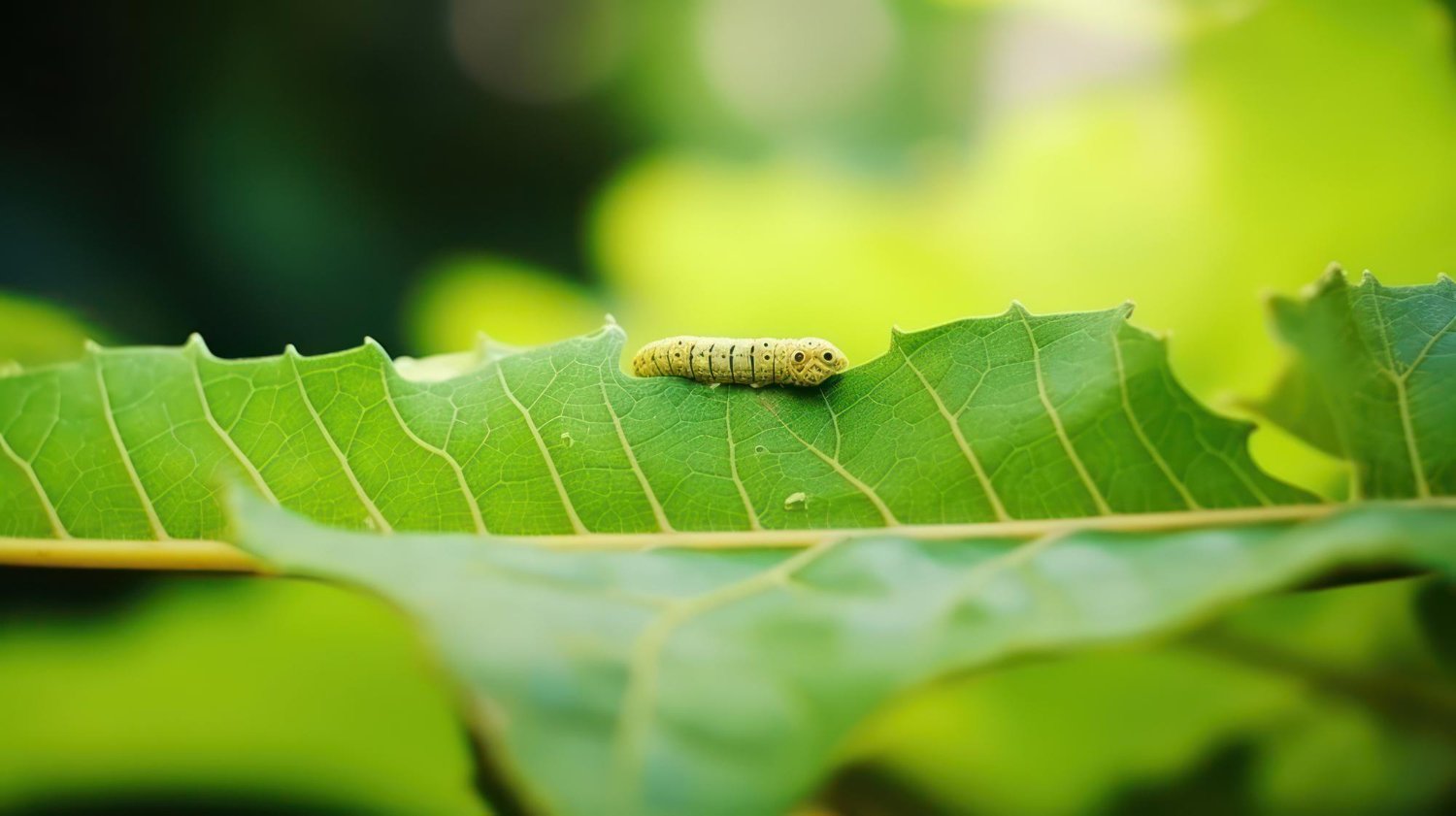
No matter how much you care for your garden, you will likely avoid pest attacks and diseases altogether. Harmful organisms can enter your property from adjacent or neighboring areas and be carried by wind, rain and air currents.
The garden contains lots of different organisms, including plants, insects and earthworms. Fungi and bacteria are also a part of this microcosm. Most of them thrive and live in harmony with each other. However, a few troublemakers induce threatening situations for the rest of the garden.
Traditional pest control methods assume that a good insect is a dead insect, so farmers in the 1960s, for example, tirelessly sprayed pesticides. The problem with this practice is… actually, there are a few things that could be improved. Pesticides can become ineffective over time because the insects develop resistance to them. Spraying exterminates both harmful and beneficial organisms. Chemical products are ruining the environment. That’s where IPM comes into play.
Understanding the Basics of IPM
Integrated Pest Management (IPM) is a method of maintaining a thriving garden in a sustainable and contemporary way. Unlike traditional practices of combating harmful microorganisms, the application of the integrated pest management helps to get rid of pests without harm to nature.
Let’s briefly review the fundamental principles and potential strategies of IPM before selecting the tools.
Identification
Defining a problem is the first step towards solving it. Start by carefully examining all the symptoms of disease or pest infestation. After gathering all the necessary information, use multiple sources to research the problem and learn practical methods to combat it.
Monitoring
Regular monitoring of garden conditions and pest activity enables determining the threat type and monitoring changes accurately. It helps to detect problems early and take effective measures. Records of type, population size, and distribution should also be maintained. All of this helps identify meaningful patterns and trends that will help keep your garden healthy.
Preventing Approach
Prevention is the core of IPM methods. The key to this practice is to stop pests or diseases before the vegetation is damaged. It’s important to choose plant varieties resistant to pests and maintain good hygiene to ensure a healthy garden.
Cultural Practices
Growers can clean their area by removing old crops, infested plants, and weeds that may shelter pests. Proper plant care, such as adequate watering, fertilization, and pruning to reduce plant stress, also falls into this category. Careful selection of varieties resistant to insect damage is one of the most effective ways to plan a garden using cultural control.
Biological Control
Rather than completely eradicating pests, biological control methods aim to maintain manageable infestation levels. This approach in integrated pest management allows for a sizeable natural niche to remain, which nature will always seek to fill. By keeping pests at tolerable levels, predator species have a steady food source while plant damage remains low.
Chemical Control (in a pinch)
IPM is designed to help significantly reduce the use of chemicals. However, from time to time, this measure may be helpful in exceptional circumstances. Pesticides must be used carefully, and choose those that target only a specific pest and do not cause severe damage to the environment.
Choosing the Right IPM Tools
After identifying the problem, analyzing the information obtained through monitoring and exploring possible strategies and options, you can choose tools to get integrated pest management benefits.
Physical Controls
This method is also called “mechanical” control. What specific actions should be taken? You can physically remove pests from your garden using traps, barriers, and tillage. When discussing diseases, this means additional pruning and removal of diseased plants.
Prevention
How do you keep pests from ruining your garden? Choose resistant varieties of plants that are also suitable for your region’s climatic and weather conditions. You can also install row covers or netting to block harmful insects from reaching your crops. Take care of the hygiene of your site by clearing it of debris and weeds that can serve as a home and food for pests.
Biological Control Tools
Ladybugs, lacewings and wasps are beneficial insects that are a must for any garden. You can purchase and release them or take care of attracting them to your site. Soil pests can be controlled by introducing nematodes. Support a variety of beneficial organisms, encouraging habitat diversity.
Chemicals
If pesticide use cannot be avoided, look for low-toxicity solutions that do not harm people or pets to save the lives of beneficial insects in the garden. The manual should be your best friend; don’t ignore it. Spot treatment is also a reliable way to minimize damage to the nature and garden inhabitants.
IPM is a sustainable pest and pathogen management approach that includes several strategies and practices. Choosing the right combination of tools helps control pest and disease problems without harming the environment and the microorganisms that help your garden stay healthy by supporting natural processes.
Pest Control
8 Best Pest Control Advice When Buying a New Property
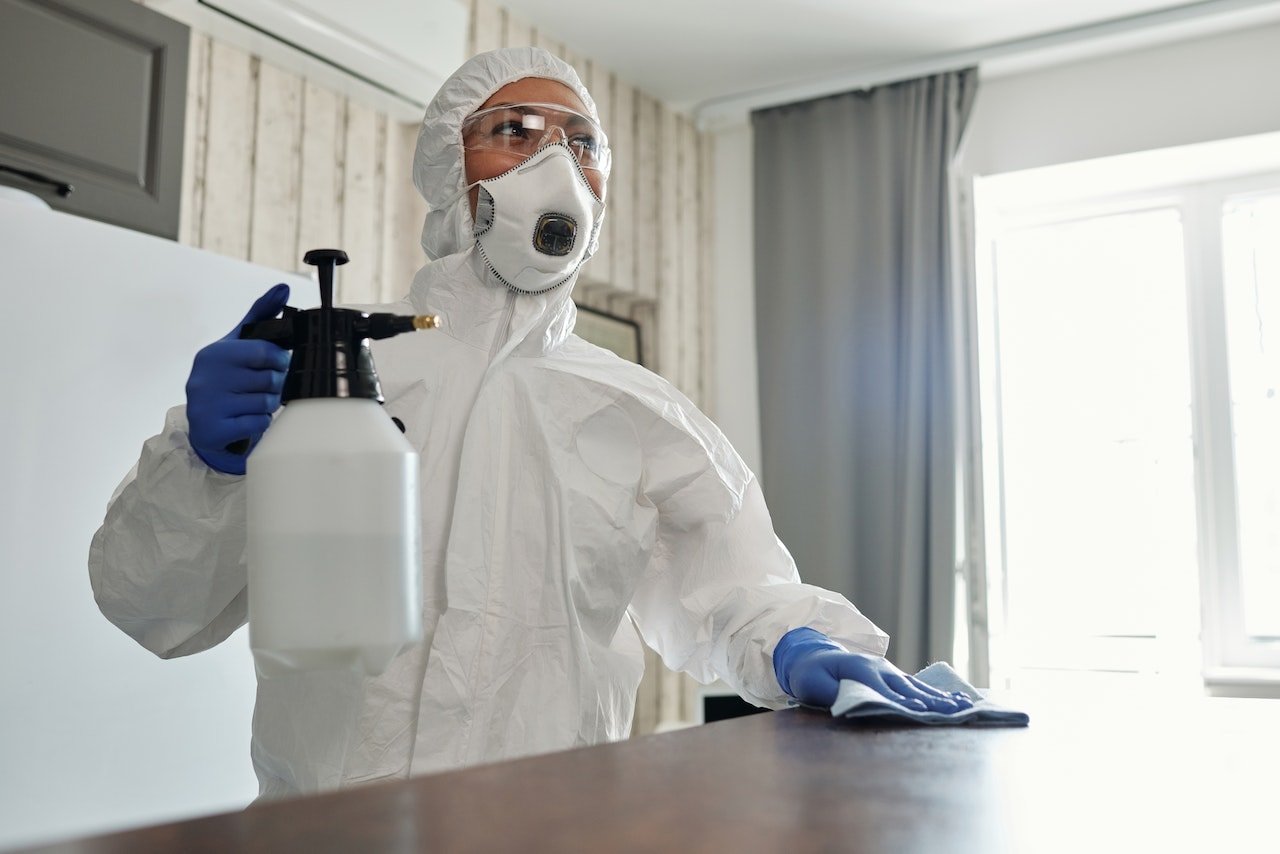
When buying a new property, it is important to consider the issue of pest control. Pests such as rodents, termites, ants, and cockroaches can cause significant damage to your property and be a source of discomfort and health risks. To help you ensure that your new property is free of pests, here are 8 best pest control advice to consider:
- Give the property a thorough inspection
Before buying a property, it is crucial to conduct a thorough inspection to identify any existing pest problems. Hire pest experts, like rat control services from Toronto, to inspect the property and provide you with a report.
This report should identify any existing pest infestations, the severity of the infestations, and recommended treatment options. Armed with this information, you can make an informed decision about whether to proceed with the purchase or negotiate a better price to cover the cost of pest control.
- Check the building’s history of pest control
Find out if the property has a history of pest control measures. If pest control was conducted in the past, it is important to determine the effectiveness of these measures and whether they were successful in eradicating pests.
Knowing the history of pest control can help you identify any recurring pest problems that may require ongoing treatment. You can ask your real estate agent from Ajax to provide the history of the property for you.
- Inspect the surrounding area
The surrounding area can have a significant impact on the likelihood of pest infestations. For example, if the property is near a garbage dump or a stagnant body of water, it may attract pests such as rats, cockroaches, and mosquitoes.
Inspect the surrounding area for any potential pest hotspots and take steps to mitigate the risks, such as clearing bushes and debris, covering garbage bins, and draining stagnant water. You can hire pest control experts from Collingwood to thoroughly inspect the property for you.
- Seal up any entry points
Pests can gain access to your property through small cracks, gaps, and holes. Inspect the property for any entry points that pests may use to enter your home and seal them up.
This includes sealing gaps around doors and windows, repairing cracks in walls, and covering vents and chimneys.
- Keep the property clean and clutter-free
Pests thrive in dirty and cluttered environments. To reduce the risk of pest infestations, keep the property clean and clutter-free.
This includes regularly cleaning surfaces, vacuuming floors, and clearing clutter from cupboards and shelves. To avoid attracting pests, store food in airtight containers and regularly dispose of garbage.
- Install pest control devices
Installing pest control devices can help prevent and detect pest infestations. For example, installing fly screens on windows and doors can prevent flies and mosquitoes from entering the property.
Installing rodent traps and bait stations can help control rodent infestations while installing termite bait stations can help detect termite activity.
- Use pest control treatments
If pests are identified during the inspection, it is important to use effective pest control treatments to eradicate them. So, it’s advisable to seek the services of a professional pest control company like pest control Baltimore, a reputable service provider. They are equipped with the knowledge, tools, and specialized techniques to tackle various types of pests effectively. This may include using insecticides, baits, and traps. It is important to use these treatments safely and according to the manufacturer’s instructions.
- Regularly inspect and maintain the property
Regularly inspecting and maintaining the property can help prevent and detect pest infestations. This includes checking for signs of pest activity, such as droppings and damage to property, and taking appropriate action if pests are detected.
Regular maintenance, such as repairing leaks and cracks in walls, can also help prevent pests from gaining access to the property.
It is crucial to prioritize pest control when buying a property. Identifying and addressing any existing pest problems early on can save you from costly repairs and potential health risks down the line.
Taking the necessary steps to prevent pest infestations will help ensure that your home remains pest-free. When buying a property, be sure to consider pest control as a crucial aspect of the purchase process. Remember, early prevention is important to maintaining a safe and healthy living environment.
Pest Control
Why Are Mosquitoes So Dangerous?
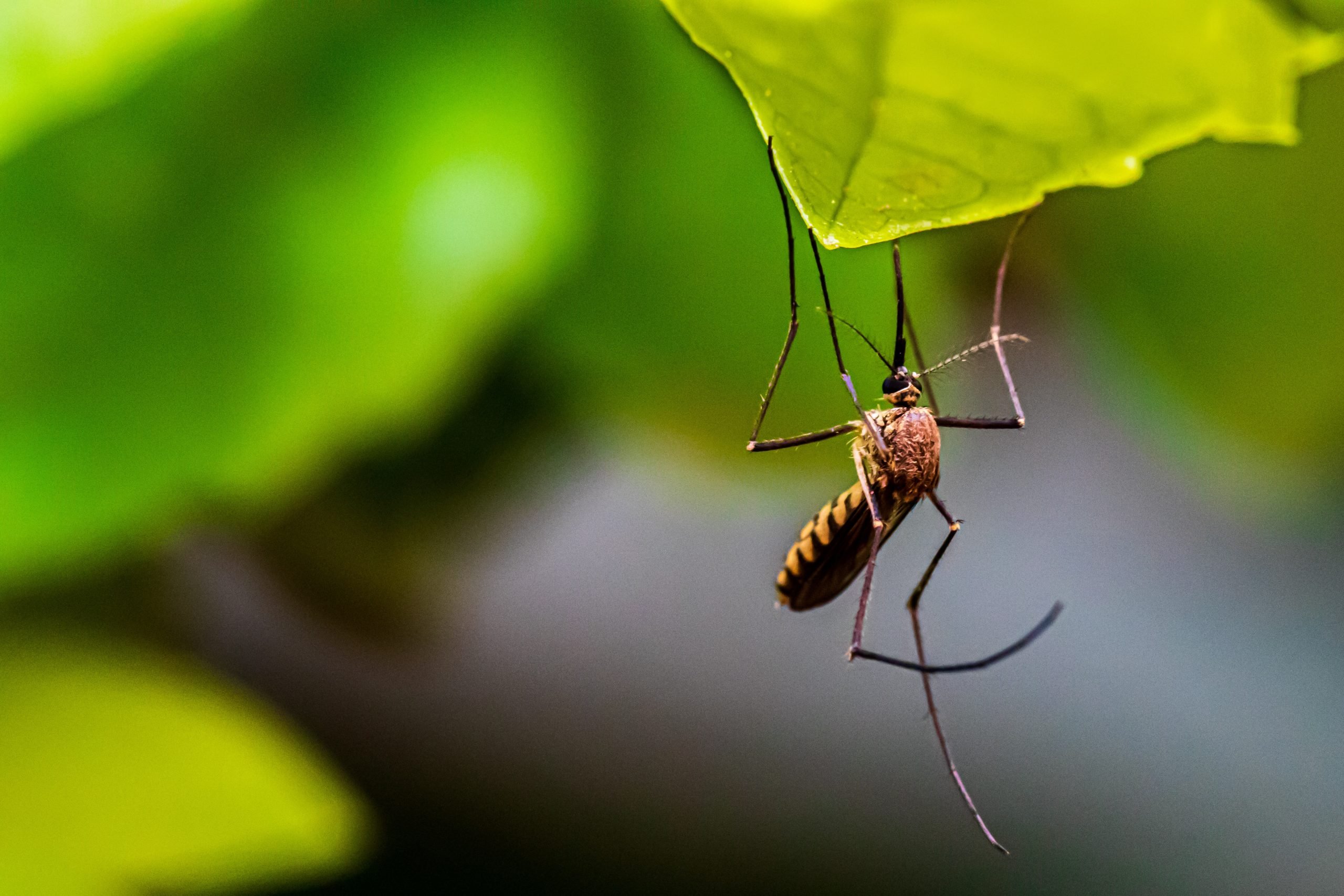
You might be surprised to hear that mosquitoes are the deadliest animal in the world. Yes, you read that right! Those pesky flies cause over 725,000 deaths every year, most of which are due to malaria.
Most of us know to avoid mosquitoes wherever possible, and it’s common knowledge that they carry a parasite called malaria. However, these pesky flies can carry much more than a single parasite. They also transmit viral diseases, including Zika, West Nile, yellow fever, and dengue.
In countries where mosquitoes are prevalent, it’s not uncommon to enter a home and see insect repellents or mosquito fogging systems, especially during summer where bugs seem to be everywhere. Many people also invest in professional mosquito fogging services to keep their homes pest-free.
Let’s take a closer look at what happens when a mosquito bites you and how these pesky flies can transmit diseases to humans.
What Happens When a Mosquito Bites You?
Learning about how mosquitoes transmit diseases can make it easier for you to keep yourself and your loved ones safe.
There are three different types of mosquitoes (Anopheles, Aedes, and Culex) that exist across the world, and each one carries different diseases. It’s only female mosquitoes that bite humans and such blood because they need this blood to supply nutrients for their eggs so that they can propagate.
A female mosquito can sense when a human is nearby by detecting the infrared (heat) waves that we emit from our skin as warm blood moves through our arteries and veins. They can also pick up on unique human scents.
When a mosquito punctures your skin with two tubes, one of which draws blood and the other of which injects an enzyme into your blood. This enzyme contains anti-coagulant proteins that prevent your blood from clotting, so they can enjoy a continuous flow of blood into their tube until they’re full.
The anti-coagulant proteins that a female mosquito injects into your skin can cause a small allergic reaction that leads to an itchy, red bite.
How Do Mosquitoes Spread Diseases?
It’s not just a raised, itchy bump that mosquitoes leave after they bite you; they might also infect you with a parasite or virus.
You can never be sure whether a mosquito is infected when it bites you, which is why it’s essential that you protect yourself from them as much as possible.
When an infected female mosquito injects its anti-coagulant proteins into your bloodstream through its saliva, it can also deposit parasites or viral particles. Inside your body, the parasite or virus can multiply and grow and may cause serious side effects or even death.
The most common diseases that a mosquito transmits include:
- Chikungunya
- Dengue Fever
- Malaria
- West Nile Virus
- Yellow Fever
- Zika Virus
In the United States, West Nile Virus is the most common virus spread by mosquitoes.
How Do You Stop a Mosquito Bite from Itching?
Usually, mosquito bites don’t require any treatment, and they will resolve by themselves after a few weeks. However, if you’re experiencing excessive itching, swelling around the bite, or additional symptoms, like ongoing headaches, you’ll need to take action.
It’s best to avoid itching the bite as much as possible to prevent breaking the skin and risking infection. You might benefit from applying topical creams, which you can get from your healthcare provider, to soothe the swollen area around the bite.
Keep the bite area clean by washing it with soap and warm water each day. You might also want to cover it with a plaster or bandage to reduce the risk of infection and stop you from scratching the area.
Some of the recommended treatments for mosquito bites include:
- Aloe vera
- Antihistamines
- Chamomile tea
- Honey
- Hydrocortisone
- Oatmeal
How to Protect Yourself From Mosquitoes and Mosquito-Borne Diseases
Taking the right steps to prevent yourself from getting bitten by mosquitoes will reduce your risk of nasty bites and potential diseases. Here are some great things that you can do to protect yourself from those pesky flies:
- Avoid traveling to areas of the world where mosquitoes are prevalent (usually countries around the equator where the weather is humid)
- Keep your skin covered up as much as possible
- Wear thick clothing so mosquitoes can’t bite through it
- Surround yourself with protective netting when sleeping
- Use protective screens over doors and windows
- Invest in a mosquito fogger to rid your garden of these pests
- Avoid going outside during dusk and dawn when mosquitoes are out in full force
Pest Control
8 Tips On Finding The Best Pest Controller For Your Home

Choosing The Right Pest Control Team
One of the most difficult aspects of dealing with pests is figuring out how many there are and what they’ve done to your house. Fortunately, pest control experts like Pro Pest Control Sydney https://www.propestcontrolsydney.com.au can take care of everything for you. From identifying the type of pest you have to recommending the best pest control plan to solve the issue.
When it comes to finding the best pest controller for your home, it’s important to do your research. Different companies offer different services, and you’ll want to find one that can meet your specific needs. Here are eight tips on searching the best pest controller for your home.
1. See If They Do Inspections Or Consultations
Some pest control companies offer a free consultation and inspection to help determine the best course of action. It might be worth taking advantage of this free service. The professionals will be able to walk inside, and let you know if the pest problem was caught early or has simply been festering for a while.
2. Look For Pest Control That Is Environmentally Friendly
By looking for pest control that’s environmentally friendly, you’ll be doing your part in making the earth a better place. Along with being safe and effective on pests. Synthetic pesticides are harmful to children and pests who are likely to ingest these toxic chemicals. However, the environmentally friendly pesticides are not made with toxins. Thus, they are 100% safe for all members of the family.
3. Seek out Licensed Operators
Most pest control companies will gladly show you, their license. This is to prove that only licensed and properly trained professionals are working in your home. They should also display the labels for any pesticides they intend to use in your home, as well as other pertinent information. Visit Environmental Protection Agency to learn more about pest licenses and permits.
4. Ask For Referrals and Look For Reviews
One of the best ways to find a great pest control business is by asking others for referrals. If you want more assurance that your chosen company will live up their end of agreement, ask them if they have any online reviews or testimonials from past clients who used their service before.
5. Make Sure They Are Budget Friendly
The last thing you want is a pest control service that will break the bank. Make sure they are within your budget. Take advantage of consultations and inspections before committing to one company. This is to avoid being stuck with an overpriced bill when something goes wrong later on. Plus, don’t be afraid to shop around and find the best option.
6. Ensure They Can Handle Your Pests
Experience is key when it comes to ensuring that your home’s pests are taken care of. Some companies focus on several types, while others handle just one type. Make sure you know which ones can solve what’s bothering you before hiring them because if not then there could be more problems down the line. Always look at their level of expertise and if they know how to best handle any pest issues.
7. Make Sure They Can Work With You
If you own a commercial business, the times when you can have your business treated for bugs will most likely be different than if you have a residential problem. Most commercial pest controllers will be able to work around your schedule and perform treatments when your business is not open or serving customers.
8. Look For A Proven Track Record
You want to make sure you find a pest controller with an established track record of success. It’s easy for inexperienced people or new businesses set up shop in today’s market, but they might not be able handle the job properly and your home could suffer as well. How do I know if a company has been around for long? There are many ways, but one of the most straightforward is looking at their reviews. After all there’s nothing worse than hiring someone who can’t deliver on what they promised! Plus, when you’re in such an important position as deciding between two companies with similar services it pays off to be safe rather than sorry.
By following these simple tips, you can be sure to find the best pest controller for your home. And with pests under control, you can rest easy knowing that your family and pets are safe from harm.
Pest Control
Different Types of Pest Control Treatments
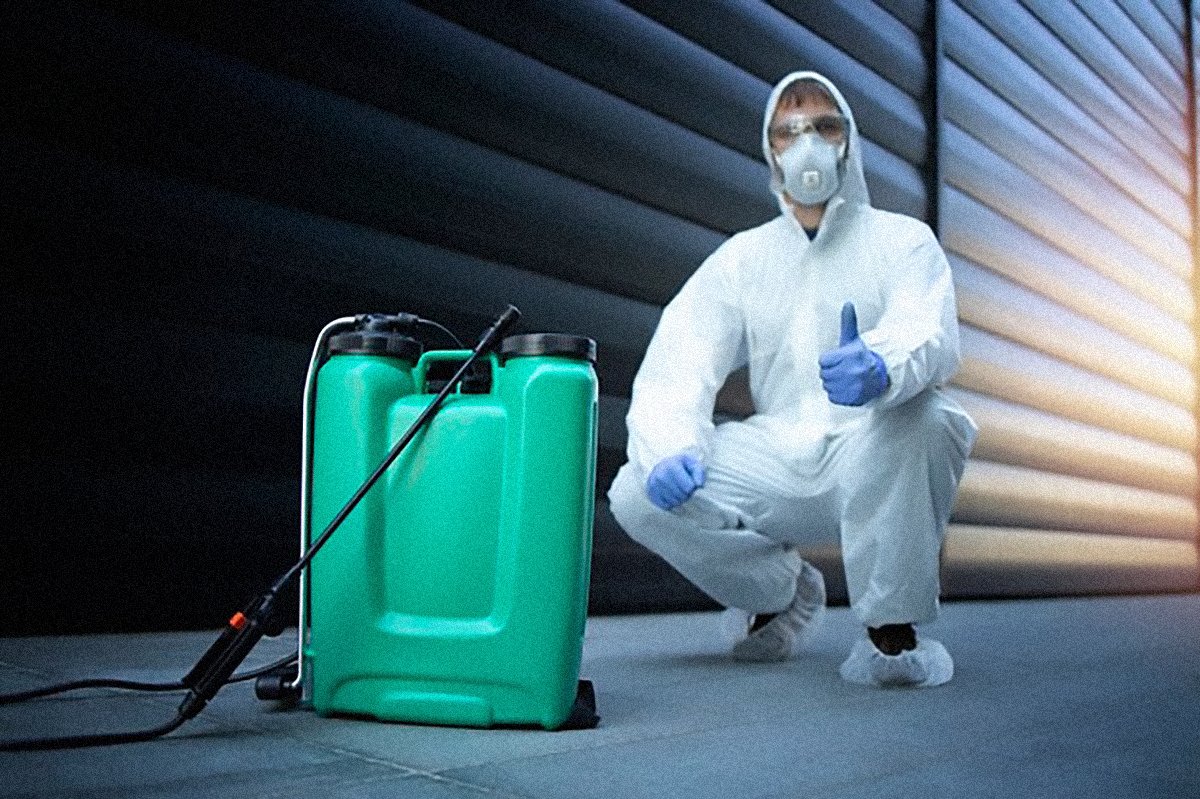
Household pests are commonplace across the USA. Whether we’re talking rodents or roaches, ants, and termites, they are everywhere. While some pests are essentially harmless, you still don’t want to share a home with them. That’s why we’re going to be looking at different types of pest control treatments and methods.
If you want to look at an example of a typical pest control company, we believe Majestic Pest Control is a good one. They have some interesting information on their website about how to get rid of many different pests. We’ve put together some information on how to deal with pests and what methods are suitable. We’ll start with something that is often overlooked, and that’s knowing what you are dealing with,
Correct Identification
It is important to know what you’re up against when dealing with pests in the home, as each different one presents a separate scenario. Rats and mice, for example, will be caught mainly by bait and traps, while roaches are usually only eradicated by chemical methods.
The first thing a professional pest control expert will do is thoroughly examine your property for signs of pests that identify the species involved. They will then trace back to where the creatures are coming from and how they get into the home.
In the case of insects, it is vital to destroy the source to prevent further infestations and kill the creatures in the home. Some pests will not be exterminated. Bees, for example, are vital to the ecosystem. A bee’s nest can be dangerous and should not be tackled yourself – the same applies to wasps and hornets – and the expert will remove the nest and the bees to somewhere they can thrive.
So, step one is identification, and the next step is choosing the correct treatment method.
Organic Pest Control
The three main methods of eradicating pests are organic, chemical, and bait and trap. Many people do not like to use chemical pest control methods – more on them in a moment – and indeed, many commercial pesticides that have been removed from the market are now illegal to use after previously facing mass tort lawsuits. If you have any old pesticides in your shed or garage, please check if they are among the banned substances and ensure they are disposed of safely and correctly.
What do we mean by organic pest control? It’s an umbrella term that applies to any non-chemical – or safe chemical – pest control method. For example, Sodium fluoroacetate is a poisonous substance to many household pests and is regularly used in baits for rodents, roaches, and more. It is considered safe as it is biodegradable and causes no harm. Other organic methods include insecticide soaps, safe oil sprays, and even nematode worms targeting pests. Talk to your local pest control experts for more information on organic methods.
Chemical Pest Control
Chemical pesticides – as we have already mentioned – are the last resort. Many have been banned as the residue they leave behind finds its way into the watercourse and the ground. This is dangerous not just to us but to animals and plants. However, your pest control experts will be licensed to use certain chemicals, for example, when getting rid of roaches and other problematic insects.
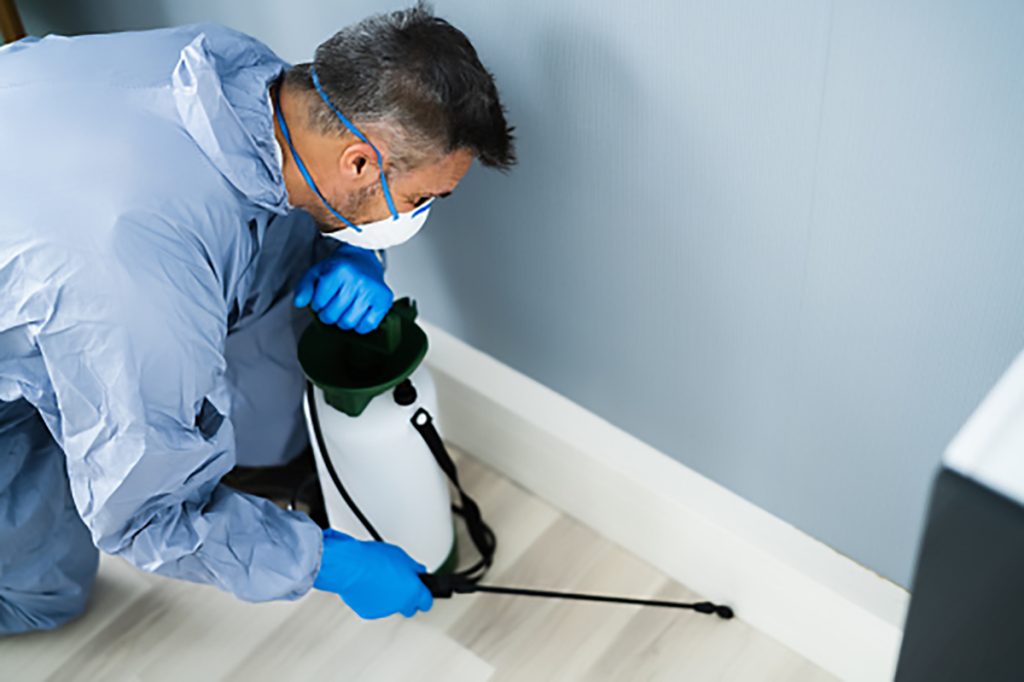
These methods use sprays, bombs, and other devices to eliminate even the most troublesome pests. As they know how to use these products correctly and safely, they will leave your home clean of chemicals and pests. The experts will advise you on how long you, your family, and your pets will need to remain off the premises while the work is carried out and ensure that the home is safe to return to before you do.
If you have an infestation of roaches, ants, or other insects, this may be the only treatment that works. On no account, dig out those old pesticides mentioned earlier as they will be dangerous, and don’t try using chemical methods yourself. Always talk to the experts and remain on the safe side.
Baits and Traps
Baits and traps are not just used for mice and rats – and other rodents – but can also be successful for insect pests. Roaches may be caught in a trap and are easily attracted by the right bait. The same applies to ants and termites, each of which can be drawn out from their hiding place by a carefully considered bait.
The knowledge that comes with the services of an expert in pest control cannot be overestimated here. They will carry out their home assessment and know precisely where to place the bait and trap and what bait to use. This method has a high rate of success. The expert will revisit your home regularly to collect the dead pests and monitor progress, and eventually, no more will be caught – they’ve been eradicated.
Preventative Pest Control
A professional will also be able to assess your house for preventative measures. Some of these are simple. For example, ensuring all food in the house is kept in airtight containers, and none is left out on the side for roaches and mice to enjoy. Also, look for leaking water pipes and other sources of moisture that insects tend to enjoy.
Then there’s proofing all entrances – including doors, windows, and air bricks – and filling in cracks and holes in masonry. You will be surprised how small a gap a mouse can squeeze through. There are many preventative measures you can take, and while none are a guarantee, each will help to an extent.
Conclusion
There is a strong likelihood you will experience an infestation of household pests at some point during your life. We recommend an immediate call to your local pest control experts as the best course of action. If you think you have a pest problem, get in touch now and have them assess your home for immediate treatment.
Pest Control
Guarding Eden: Protecting Your Garden from Pests and Disease

Gardening is good for your health. Studies show that gardening provides health benefits by increasing exposure to Vitamin D, providing aerobic exercise, and improving one’s mood. Spending time in green surroundings even helps combat loneliness and dementia.
Since your garden improves your health every time you visit it, shouldn’t you do your best to enhance your garden’s health in return? Just like humans, gardens need special care and attention to thrive and avoid destructive diseases and invaders. With a bit of planning and effort, you can keep your garden pest- and disease-free and repay it for all the benefits it provides.
Eliminating Pests
Numerous species of insects and small animals can cause irreparable damage in a garden. These pests can ruin all of your hard work and drastically reduce your harvest. While it is impossible to keep all pests out of your plot, there are specific actions you can take to protect your garden without resorting to harmful chemicals.
For instance, slugs and snails are common garden infiltrators. Because they are nocturnal, it’s challenging to find and remove them during the day, when you most likely perform most of your gardening. These pests will feed on your crops and leave dozens of eggs, perpetuating the problem indefinitely.
To eliminate slugs and snails, place small containers of beer around your garden. The mollusks will be attracted to the yeast in the beer. When they attempt to drink the beverage, however, they will fall into the container and drown.
Preventing Disease
Keeping your garden clean is the first step in disease prevention. Regularly remove all plant debris from your garden, as it can serve as a breeding ground for plant disease and pests. You should also clean and disinfect all of your gardening tools and paraphernalia regularly, including gloves.
For trees, it is essential to avoid injuring the tree or its roots when caring for your lawn. A cut on the body of a tree is similar to a wound on human skin. Infection can seep in through these abrasions. However, in the worst-case scenario, tree removal due to disease might be necessary as leaving a dying tree in place is a threat to nearby trees. It can even endanger your house and loved ones since dying trees often fall. It’s not a task that comes easily, especially if it’s a tree that’s been around for generations, but if it cannot be saved, it’s better to remove it.
Dealing with Sick Plants
No matter how often you clean and disinfect your garden and tools, some of your plants may fall ill at some point. The first step in dealing with a sick plant or tree is identifying its symptoms: discoloration, wilting, and defoliation can all be signs of an ill plant. Several online tools can help you determine what kind of disease your plant is suffering.
If possible, find an organic remedy for the disease with which your plant is struggling. Unfortunately, not every plant can be nursed back to health. If a plant is slow to respond to treatment, it might be best to remove it before the disease spreads to other nearby plants.
While pests and diseases are an inevitable aspect of gardening, you can reduce these factors. Organic products can be used to repel pests. Keeping a clean and disinfected garden can help reduce the chances of infestation or disease. When a plant or tree succumbs to disease despite your best efforts, removing it can help protect the surrounding plants.
Pest Control
How to Kill Vegetable Garden Pests with Ease
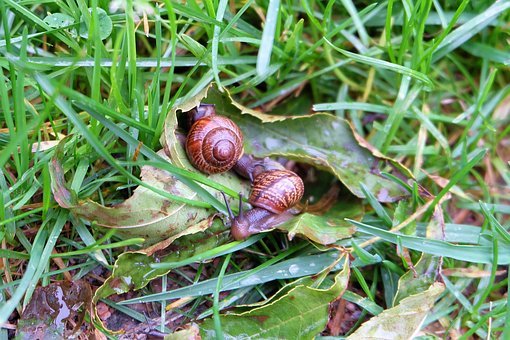
When it comes to harvesting the vegetables from your garden, you don’t want to find out they’ve been destroyed by insects or pests. Luckily, it’s quite simple to kill any pests that may be damaging your crops.

- Slugs and Snails
Both slugs and snails are commonly found in gardens, but unfortunately, these pests are notorious for damaging crops. Not only do they feed on crops, but they also only come out at night, making it tricky to kill them during the day. Slugs and snails also lay many eggs, which can lay dormant for several years before they hatch.
If you’re struggling with a slug and snail infestation, try a beer bath. Simply place small vats of beer around your garden. Slugs and snails are drawn to the yeast in beer. However, once they try to drink this yeasty beverage, they will fall in and drown.
- Aphids
Perhaps one of the most destructive insects, aphids love to drink the sap out of any plant in your vegetable garden. They even spread diseases. If you notice signs of an aphid outbreak, then you should make an organic insecticide out of dish soap.
Simply mix a few tablespoons of organic dish soap with a quart of water. Add a couple drops of orange or lemon essential oil. Spray this concoction directly onto your plants, making sure to fully saturate the leaves. This dish soap insecticide is also effective at killing other vegetable garden pests, including mites, mealybugs, and whiteflies.
- Cabbage Root Fly
The cabbage root fly is known for destroying vegetables by damaging the roots. These pests lay their eggs at the base of plants. When the eggs hatch, the maggots burrow deep down to the roots, where they feast. This can quickly kill your vegetable garden.
If you notice damage to the roots of your crops or you find maggots on the roots, you can quickly remedy the situation by placing a cabbage collar around the base of your plants. This will prevent any newly hatched maggots from reaching the roots.
- Rodents
Rodents, including mice, rabbits, moles, and squirrels, are always looking for their next meal. However, you don’t want them feeding on your vegetable garden. Spraying a mixture of soap, chili powder, and garlic onto your vegetables is one of the best ways to deter these pests. It even works to repel beetles, slugs, leafhoppers, and borers. This mixture will also keep your family pets out of your garden without harming them.
It doesn’t take very much effort to keep your vegetable garden healthy and free of insects and other pests. Natural and organic products are often all that’s needed to deter or kill these unwanted visitors.
Be proactive all year long to ensure your vegetable garden thrives and kill garden pests organically.
Pest Control
Mosquito Foggers

Nasty mosquitos can be one of the problems in a home. When they sting its itchy and may cause diseases. The foggers are handy in ridding them. They create a fog when the insecticide solution is sprinkled. The fog is able to penetrate into the depth of grass, trees and bushes making them the best alternative. Here are foggers worth trying; –
Burgess 1443 40-ounces Outdoor Propane Insect Fogger
This propane fogger is a reliable product. It is a thermal fogger making it suitable for outdoor use. It is effective in killing even in damp and marshy regions. It holds up to 40 Oz and uses the insecticide without wastage. The fog does not damage trees or shrubs when droplets fall on them.
Tri Jet ULV Non-Thermal Flogger
The fogger is easy to set up and use and operates using electricity. Though it has not become very popular the few customers have expresses satisfaction in its effectiveness. The fogger can be used for both indoors and outdoors purposes. It is effective in getting rid of mosquitoes, molds, spiders, roaches and bugs. It sprays 4000 sq. ft of territory and has a tank volume of 1 gallon, the approximate insecticide needed for 1000 sq feet is 1 quart of the insecticide. The fogger sprinkles up to thirty feet. After spraying the fog covers the area to up to 25 to 30 mins. One defect is that it is expensive.
Bonide420 Fog-Rx Propane Insect Fogger
This propane powered fogger is effective in getting rid of mosquitoes and midges. It is easy to operate and fast acting giving up to 4 days of mosquito-free time. However, it requires safety measures as the flogging fluid can shoot flames mosquito foggers.
Burgess 960 40 oz. Outdoor Electric Insect Flogger
It the successor of burgess 1443 however it uses electricity instead of propane. Very effective for outdoor use. A compatible insecticide is recommended for use. Treatment may last 3 to 5 hours or longer offering protection by vaporizing the insecticide killing mosquitos and other biting insects. Dissatisfaction by the users has been expressed, stating that it does not have any effect on the number of mosquitos.
BEAMNOVA Mist Duster Blower Spray Gasoline Powered Mosquito Powered Cold-Fogger Backpack Sprayer
Its engine operates using petrol. Not only can it be used as a fogger but also can also be used in pest control. It can also be used with both liquids and dust. Users feedback is positive, it is highly recommended for its speed and works without any mechanical issues. However, it is expensive and assembly manuals, to others, may not be so helpful.

Aerosol fogger
Are simple and easy to use. There are very effective outdoors and kills mosquitos on contact when sprayed effectively.
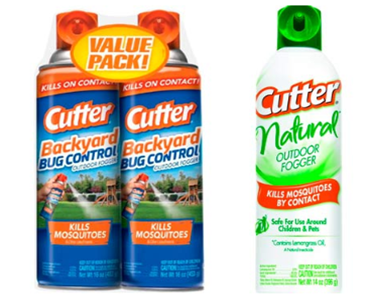
Black Flag 190255 fogging insecticide works with a variety of foggers such as black flag, burgess, and repel thermal fogger. When sprayed it kills the mosquitos and offer protection few hours up to 3 days. It’s well for use.
Hope the information above helps!
Pest Control
Get Control Of Your Garden By First Knowing Who The Enemy Is
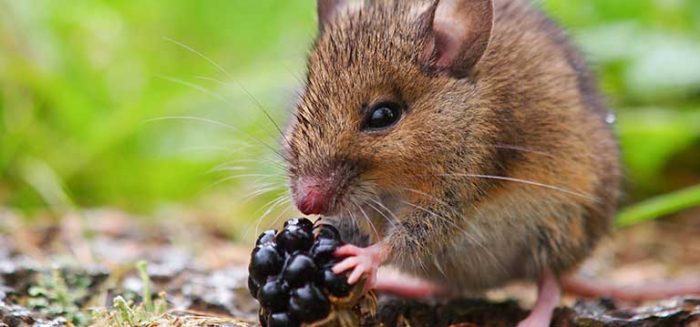
 Every now and then, people encounter intruders in their gardens and they don’t know how to react. Unfortunately, there are many different animal species that can infest your garden and live off of your vegetables, fruits, or even flowers. The thing is, it’s kind of impossible to expect that everyone will know everything about potential infestations and pests.
Every now and then, people encounter intruders in their gardens and they don’t know how to react. Unfortunately, there are many different animal species that can infest your garden and live off of your vegetables, fruits, or even flowers. The thing is, it’s kind of impossible to expect that everyone will know everything about potential infestations and pests.
That’s why people aren’t strangers to exterminators and wildlife experts, depending on what type of animal we’re talking about. Although, something can be said which I think most people would love to hear. In short, you’re entirely capable of dealing with an infestation yourself. You don’t need any expensive services and people that’ll deal with the infestation instead of you (of course, if you tried everything and nothing works, the exterminators are a good option).
In this article, we’ll be talking about how you can gain control over your garden and what’s in it by identifying what type of animal is bothering you. We’ll also mention something about how to get rid of mice in the garden (as they’re also a type of pest that may annoy you).
Identify the Enemy
Each pest can be dealt with as long as you know what you’re doing. But before you actually start researching about the various methods to get rid of vermin from your garden, you’ll need to figure out what exactly is ruining it.
The most common pests found in the garden are raccoons, mice, rats, and others. With the exception of mice and rats, killing wildlife isn’t exactly allowed (unless you have a permit, and some US states don’t allow those either).
You best hope that you’re dealing with mice or rats because it will take a bit more effort for anything else.
Prepare your Defenses
Once you’ve identified the enemy, you’ll be entirely capable of setting up your defenses. When talking about mice or rats, your best bet would be to get traps. And, luckily for everyone, there are many different traps available. For example, snap traps are great against mice but not very effective against rats.
Then again, there are specific rat traps as well. But, if we’re talking about raccoons, squirrels, or even moles – you won’t exactly be able to kill them. Just to be safe, make sure you use live traps (otherwise called catch & release traps). Also, bait choice is very important so be sure to educate yourself on this as well. Peanut butter should work great for most pests, but again, knowledge is everything.
Conclusion
And that’s basically it. Place your traps in potent trap locations such as entry points (doors, windows…), and throughout your garden. Also, make sure you keep your garden clean and without clutter. Most pests will have to find shelter, water, and food. The entire process isn’t difficult, but if you, for whatever reason, can’t clear out your garden – call the professionals. Additionally, ask them for some tips so if there’s another infestation, you have a bit more knowledge with you!
Read More Articles
Greenhouses
Preventing Pest Infestations in a Greenhouse

The spring season brings new beginnings for plant growth. The landscape becomes green again and multitudes of colors and fragrances fill the air as flowers break through the ground’s surface. The new life brought on by spring is rejuvenating for horticulturists. It is not just plants and flowers that “come alive” during this time of year. Just as new plant life emerges all around us in spring, new life for pest insects is also resurrected. As temperatures rise and the summer months approach, more and more insects leave dormancy and begin new life cycles. This is why it is so important for greenhouse gardeners to be aware of and take counter measures against pest insects during the spring and early summer seasons. In many cases, a few simple preventative steps can reduce the likelihood of a devastating pest insect attack.
Sanitation
Sanitation is the number one defense against pest insect infestations. Keeping the greenhouse and the plants clean and tidy can do wonders in preventing pest insects and pathogens. Periodically wiping down the surface of the greenhouse and removing dead or dying vegetation will greatly reduce the possibility of pest insects. Plants should be closely monitored for pest insects on a weekly basis (at the very least).
It is a good idea to set up a quarantine area in the greenhouse. Whenever a new plant is purchased or gifted, it should be quarantined immediately for a week or two to ensure it does not harbor pest insects. After the quarantine period is over and the plant has received a clean bill of health, it may join the other plants in the greenhouse. Bringing new plants into a greenhouse is the most common way a greenhouse gardener will introduce pest insects into his or her own garden. If pest insects are observed on any new plant, it should be thoroughly treated before being introduced to the other plants in the greenhouse.
Monitoring for Pests
As previously mentioned, it is important for greenhouse growers to monitor their gardens for any signs of pest insects. Yellow sticky traps are great tools for monitoring a greenhouse. Yellow sticky traps are similar to fly paper in that they “catch” flying insects in a glue-like substance. By closely examining the yellow sticky trap, a gardener can see if and what types of pest insects are present in the garden. Yellow sticky traps allow a horticulturist to identify potential problems before they get out of hand.
Identifying the Pest Insect
Identifying the pest insect early and accurately is vital to stopping a few pest insects from becoming an infestation. When monitoring the plants, there are some tell-tale signs that will indicate which pest insect a gardener may be dealing with.
Spider Mites
The first sign of a spider mite problem usually shows up in the form of yellow speckling on the surface of the leaves, which is caused by the insects sucking nutrients from the underside of the plant leaves. The speckling from spider mite damage will resemble light yellow spray paint misted on the leaves. Closer examination of the bottom of the leaves will reveal clusters of very tiny red mites and their eggs. A magnifying glass may be necessary to see them. In more extreme infestations, webbing may be found in-between or on the tips of branches and leaves. This webbing looks very much like a spider web and is how these nasty bugs received their name. Spider mites are difficult to get rid of and require a miticide for treatment. These tiny black bugs become active from late spring in places like your yard and garden.
Mealybugs
The first sign of mealybugs is normally cotton-like, fluffy masses found in the crotches or joints of the plant, typically near young tender growth. These tiny “cotton balls” are actually clusters of the slow moving mealybugs. These bugs can reproduce and lay eggs every seven days, so they should be treated immediately to reduce any possible contaminations. It’s difficult to kill the eggs, often in the soil, so it’s important to treat for live mealy bugs every five to seven days for three to four weeks to terminate all adults before they become mature enough to lay eggs.
Fungus Gnats
The first sign of a fungus gnat problem is typically the small, mosquito-like, black or gray insects that fly around aimlessly. They are most prevalent right after a watering or when the soil is disturbed. Fungus gnat larvae look like tiny, light-colored worms that wiggle around in the top layer of soil. They can sometimes be seen “dancing” in standing water after a feeding.
Thrips
The first sign of a thrip issue is usually “shiny streaks” that show up on the surface of the leaves. The shiny trails are actually the areas of the leaf where the thrip larvae have been feeding. Gardeners may also notice tiny black specs on the leaf surface; this is actually the larvae’s fecal matter. To the naked eye, thrip larvae resemble fast moving grains of rice. The larvae can be many different colors, but are usually yellowish-green.
Scale
The first sign of scale is usually a protective covering or bumps on the stems and stalks of the plants. The females lay eggs underneath the protective covering, which will hatch in one to three weeks. The newly hatched nymphs leave the protective covering as tiny white specs and move around the plant to feed. Nymphs insert their piercing mouthparts into the plant and begin to feed, gradually developing their own protective covering as they turn into immobile adults. Scale do not pupate and may have several overlapping generations in one season. A scale infestation is difficult to eliminate and requires a systemic insecticide.
Treatment and Control
Early detection and treatment diligence are the keys to eradicating pest insects. A gardener can start treatment with an organic or all-natural insecticide that is designed for the particular pest insect he or she is battling. Yellow sticky traps are effective in capturing most flying insects, such as fungus gnats and white flies. Denatured alcohol is highly effective as a combatant against mealy bugs and scale by wiping it on the infected areas with a cotton swab or small paint brush. Pyrethrum is an organic derivative of the chrysanthemum plant and is extremely effective against many greenhouse pest insects. Pyrethrum is the primary ingredient in several commercial spray products commonly available at most garden centers. In some cases, a pest insect (scale and mites), cannot be controlled with an organic or all-natural approach.
When this occurs, the gardener may need to implement a systemic chemical control. Systemic pesticides, such as Orthene, are effective against pest insects because they enter the plant’s tissue and kill the bugs as they feed on the plant tissue. Regardless of the treatment program, horticulturists should always use caution and be sure to read the manufacturer’s directions for application.
For more information visit ArcadiaGlasshouse.com
Pest Control
Tips for Keeping Pests Out of the Greenhouse
The best way to avoid pest problems in a greenhouse is to keep them out to begin with. The list that follows gives many ways to help keep a greenhouse pest free. The more of these that can be integrate into greenhouse gardening practices, the better chance a gardener will have of winning the war against undesirable garden pests.
Start Plants from Seed
If plants are bought at a nursery or a garden center, one can not be assured that the plants are perfectly clean. If one has been getting plants from a reputable producer and has not had problems in the past, it would be a good idea to stick with that grower, even if the prices are higher. Treated seeds are safer for starting your greenhouse plants. Untreated seeds are more likely to carry a seed-borne bacterial or fungal disease.
Repot Plants Outside the Greenhouse
Repotting plants should be done outside of the greenhouse, and any used pots should be cleaned and disinfected with a 10% bleach solution before use. Commercially available soilless mix should be used as the media for seed starting and potting greenhouse plants. This will allow one to avoid introducing insect and microbial pests that often live in soil.
Protect the Work Area
Protect the ground on the floor of the greenhouse with a barrier to keep soil born pests from digging their way in from the outside. Work in the greenhouse first before working in the outside garden. Outside plants should not be kept near the greenhouse door. These plants can be a safe harbor for bugs waiting for a chance to get in the greenhouse.
Hands should always be washed before going into the greenhouse. This is particularly important after working with plants, or produce in the kitchen.
If one has been in close contact with plants, grass or dirt/mud, a change of clothing may be in order before entering the greenhouse. If one has been walking through grass or mud, it is a good idea to remove footwear, before entering your greenhouse. If one will be walking in the woods or a wooded area under trees, or even just walking on dirt paths, try to do it after working in the greenhouse.
Consider possible contamination by visitors to the greenhouse. Visitors should not enter the greenhouse after being in another greenhouse, a garden or an agricultural field.
Clean the Tools
Insects, mites or diseases can be taken into the greenhouse on garden tools that have been used outside. Tools should be thoroughly washed and disinfected with a 10% bleach solution before bringing them in the greenhouse and in between working on separate plants.
Items that have been exposed to plants or produce are a source of contaminants. Used plant shipping boxes and produce shipping boxes may be very useful, but they should never be taken into the greenhouse.
No Pets Allowed
Dogs and cats, that live or spend time outdoors, should never be allowed in the greenhouse.
A Few More Things
Screen air intakes to the greenhouse with a very fine mesh. The screen area should be at least five times the area of the greenhouse air intake, as to not restrict airflow.
Consider if a double door is possible. This is particularly helpful in keeping moths and butterflies out. Moths and butterflies are not generally a problem themselves, but when they lay their eggs on your plants, they will soon hatch caterpillars and start to eat their hosts. On your daily bases remove any of them that are present.
Sticky fly traps can help in early detection of some flying and crawling pests.
Inspect plants as often as possible for visual predators or damage caused by harmful pests, fungus, bacteria or disease.
Pest Control
Conventional Pesticides Versus Minimum Risk Pesticides
A pesticide is any substance or mixture of substances intended for preventing, destroying, repelling, or mitigating any pest and will make claims of this on the label and advertising. Any substance falling within this definition of a pesticide must be registered by the Environmental Protection Agency (EPA) before it can be legally sold or distributed in the United States. Section 25(b) of the Federal Insecticide, Fungicide, and Rodenticide Act (FIFRA) has determined a Minimum Risk Pesticide does not require EPA registration because it poses little to no risk to human health or the environment. Individual states may still require registration of minimum risk pesticides.
Even the most careful indoor gardeners can suffer from insect and disease problems with their plants. Minimum risk pesticides are made from natural ingredients that have proven over time to defend against insects and disease, making them an effective option for prevention and control that is also non-toxic to humans. Minimum risk pesticides are generally a solution of botanical oils from herbs such as clove, thyme and rosemary. They work on contact by smothering and dehydrating insects and disease spores while providing a barrier preventing pest establishment.
Things to Consider When Selecting a Minimum Risk Pesticide
Safety and Use
It is important to remember that these products are still pesticides and though their ingredients are naturally occurring, it does not mean all of them are suitable for consumption. Not all minimum risk pesticides are allowed for use on food crops. EPA regulations are very specific on which products are allowed and which are not. A product label should clearly list specific insects, diseases, and the crops they can be applied on.
Ingredients Approved for Use on Food
Castor oil (U.S.P. or equivalent), cinnamon and cinnamon oil, citric acid, cloves and clove oil, corn gluten meal, corn oil, cottonseed oil, garlic and garlic oil, geraniol, mint and mint oil, peppermint and peppermint oil, potassium sorbate, putrescent whole egg solids, rosemary and rosemary oil, sesame (includes ground sesame plant) and sesame oil, sodium chloride (common salt), soybean oil, thyme and thyme oil, white pepper
Ingredients Not Approved for Use on Food
Cedar oil, citronella and citronella oil, dried blood, eugenol, geranium oil, lauryl sulfate, lemongrass oil, linseed oil, malic acid, 2-phenethyl propionate, sodium lauryl sulfate, zinc metal strips
Efficacy and Control
There are significant differences in efficacy and control when using natural products. It may cost a little more, but purchasing the right product should resolve your pest problem and be safe for you and your plant. An easy test is to compare two products with the same active ingredient at different price points. The higher priced item is likely to have more active ingredient leading to a greater chance for control. Research the products before you make a purchase, a little digging can give you a lot of insight into what goes into making and supporting each product. For example, can you find test data to prove efficacy? Has a product been formulated using new techniques or technologies to give it a performance edge? These questions are just the start to finding the best minimum risk pesticide for your needs.














